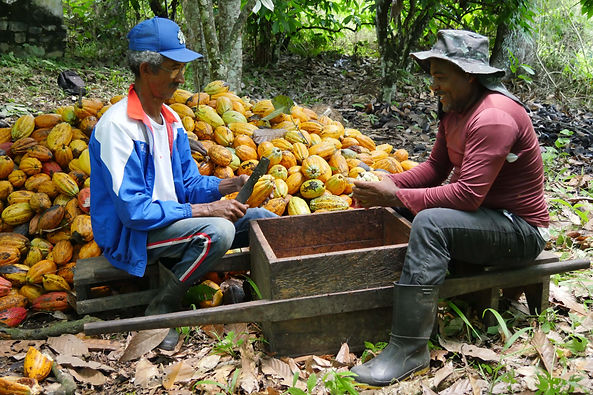
Our approach to biodiversity conservation
With the global decline in biodiversity we are facing the sixth major extinction event on earth. Tropical deforestation in particular is causing extinction on an unprecedented scale. The consequences can hardly be estimated, but may far exceed those of the climate crisis. The biodiversity crisis cannot only be prevented by establishing protected areas. These actions are important but insufficient, especially in the Mata Atlântica whose natural environments experienced a long history of decline and is now characterized by a wide variety of anthropogenic influences. Like many other organizations, we have taken this into account and have aligned our conservation activities accordingly, to create a long term impact.
Our integrated approach to biodiversity conservation comprises five focal areas which address the complexity of underlying causes. In these focal areas we work together with a wide range of partners to create an long term impact.
Biodiversity restoration
Species conservation
Sustainable livelihoods
Conservation research
Establishing
partnerships


Biodiversity restoration
The challenge:
Reducing forest loss and degradation has been recognized as a key component of combating biodiversity loos and mitigating climate change.
Our approach:
AMAP restores biodiversity and ecosystem functions through on-the-ground conservation projects. Our project area is the cocoa coast of southern Bahia. As implementing organization we reforested a wildlife corridor. We are creating comprehensive species inventories of our project area. Our projects rebuilt natural resilience against erosion, droughts and wildfires, restore the ecosystem functions and mitigate the effects of climate change.

Species conservation
The challenge:
Worldwide an increasing number of species is listed as threatened by the IUCN, mainly caused by habitat loos. This biodiversity crisis can be considered as the sixth major extinction event on earth. The consequences can hardly be estimated, but may far exceed those of the climate crisis.
Our approach:
AMAP acts on a local scale with direct species conservation projects, especially to save the endangered golden-headed lion tamarins. We purchase habitats of lion tamarins for long term conservation and connect habitat fragments by restoration of degraded farmland with native trees. We collaborate with the UESC to support basic research projects aiming to save lion tamarins in the wild. We are committed to expand our ongoing projects, initiating new species conservation projects and thus tackle the sixth mass extinction event.

Conservation research
The challenge:
Basic research about the interconnections and changes in our ecosystems and their inherent biodiversity form the fundamental base on which successful conservation is based.
Our approach:
AMAP collaborates with universities and supports basic research, the outcomes of which contribute to biodiversity conservation. We support the EAI-project, aiming to understand the long term biodiversity and socioeconomic impacts of agricultural land use change, especially of the cocoa cultivation. We are creating detailed fauna and flora inventories in our project area.


Sustainable
livelihood
The challenge:
In a human shaped landscape biodiversity conservation must address the needs of local communities.
Our approach:
Sustainable agroforestry is the ideal system to combine biodiversity conservation and income generation for local communities. The cocoa coast of southern Bahia has remained a hotspot of biodiversity, because of its cabruca system of cocoa cultivation. We maintain our bio certified cabruca sustainably and we generate income for our employees and their families.

Establishing
partnerships
We are a young conservation organization and we are always seeking to cooperate with organizations, universities and individuals to share skills and ideas. We are looking for partners to enhance our ongoing projects and start new ones, thus mitigating climate change and combating the sixth mass extinction event.

